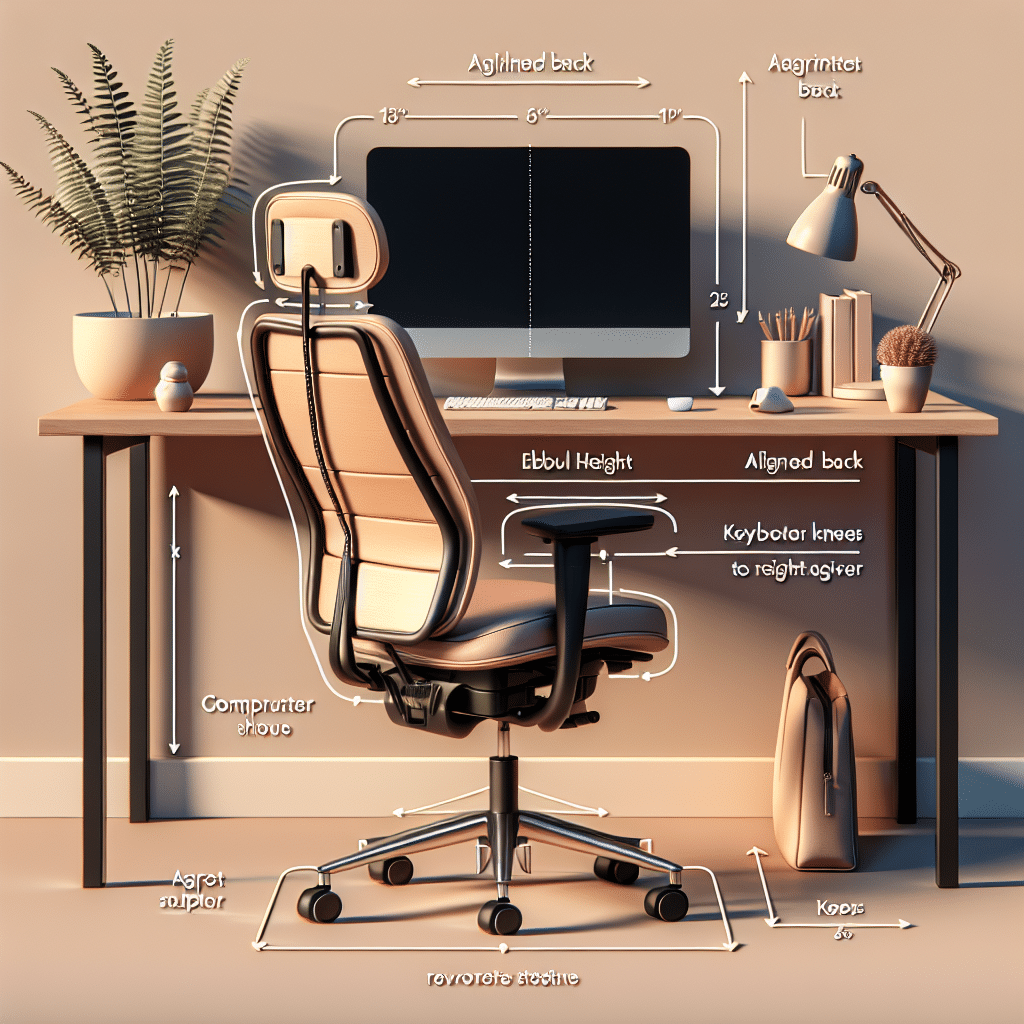Creating a Correct Desk Setup for Healthy Posture
Understanding the Importance of Desk Setup
An ergonomic desk setup is crucial for maintaining good posture while working. Poor posture when sitting for extended periods can lead to chronic pain, muscle strain, and long-term health issues such as carpal tunnel syndrome and back pain. To create an efficient workspace, it’s essential to consider various elements, including chair height, monitor position, and keyboard placement.
Desk Height
Optimal Desk Height
The height of your desk affects your overall posture. Ideally, when seated, your elbows should be at a 90-degree angle, and your forearms should be parallel to the ground. The desk height can vary based on body dimensions, but a standard range is between 28 to 30 inches from the floor.
Adjustable Desks
If possible, consider investing in an adjustable desk. This type of desk allows you to raise or lower the height according to your preference, accommodating both sitting and standing positions. Alternating between sitting and standing throughout the day promotes better circulation and reduces fatigue.
Chair Selection
Ergonomic Chairs
An ergonomic chair is designed to support your body in a natural position. Look for features including adjustable seat height, lumbar support, a seat that’s wide and deep enough to support your body, and reclining ability. A good ergonomic chair can significantly reduce the risk of back pain.
Seat Height and Depth
When sitting, your feet should rest flat on the floor, and your knees should be about level with your hips. The depth of the seat should allow you to sit back comfortably while leaving a few inches between the back of your knees and the seat.
Lumber Support
Make sure your chair provides adequate lumbar support to maintain the natural curve of your spine. If your chair lacks built-in lumbar support, consider purchasing an external cushion.
Monitor Positioning
Correct Monitor Height
Position your monitor so that the top of the screen is at or slightly below eye level. This placement enables you to look straight ahead or slightly down, reducing neck strain. The monitor should be approximately an arm’s length away, allowing you to see it clearly without straining.
Dual Monitors
For those using dual monitors, position the primary monitor directly in front of you, and place the secondary monitor to the side at an angle. This arrangement helps minimize twisting and neck strain while allowing easy access to both screens.
Keyboard and Mouse Placement
Keyboard Height
Your keyboard should be slightly below elbow height. When typing, your wrists should be straight, and your hands should float just above the keyboard. Keeping the keyboard close to the edge of the desk prevents reaching.
Mouse Positioning
The mouse should be placed on the same surface as the keyboard, allowing your arms to remain relaxed at your sides. Your wrist should not be bent while using the mouse. If you frequently use the mouse, consider an ergonomic mouse designed to reduce wrist strain.
Foot Position
Footrest Use
Your feet should rest flat on the ground or on a footrest. If your chair is too high, a footrest can help support your feet, maintaining a comfortable angle for your knees and lower back. This keeps pressure off your lower spine and encourages better circulation.
Lighting
Adequate Lighting
Lighting is an often-overlooked aspect of a healthy workspace. Ensure your area is well-lit to reduce eye strain. A desk lamp with adjustable brightness can help you focus, especially during late-night work sessions. Natural light is beneficial, so try to position your desk near windows where possible.
Reducing Glare
Position your monitor to avoid glare from windows or overhead lights. Glare can cause squinting and discomfort, leading to poor posture as you lean forward to see the screen clearly.
Breaks and Movement
Incorporating Breaks
Taking regular breaks to stand, stretch, and move around is essential for maintaining healthy posture. Aim for a short break every hour; this can involve simply standing up, walking around, or performing some light stretches.
Stretching Exercises
Incorporate stretches targeting the neck, shoulders, and back into your routine. Simple neck rolls, shoulder shrugs, and wrist stretches can alleviate tension built up from prolonged sitting.
Personalization
Customize Your Workspace
Ergonomics is not one-size-fits-all. It’s essential that individuals customize their setup to suit their unique bodies and preferences. Experiment with different chair heights, desk styles, and accessories to find what feels most comfortable. Personal items, such as plants or inspirational images, can also help create a more enjoyable work environment.
Additional Accessories
Keyboard Trays
Consider using a keyboard tray that allows adjustment for optimal positioning. This can help ensure that your wrists are straight while typing.
Document Holders
If your work involves referring to documents, a document holder can position these at eye level. This minimizes the need for neck bending.
Wrist Supports
If you spend a lot of time typing, a wrist support can help keep your wrists in a neutral position, reducing the likelihood of strain.
Conclusion
Implementing an ergonomic desk setup is essential to prevent discomfort and promote overall well-being while working. Paying attention to desk height, chair selection, monitor positioning, and regular breaks can significantly improve posture and reduce the risk of associated health issues. By prioritizing ergonomics, individuals can create a workspace that contributes positively to their physical health and productivity.
